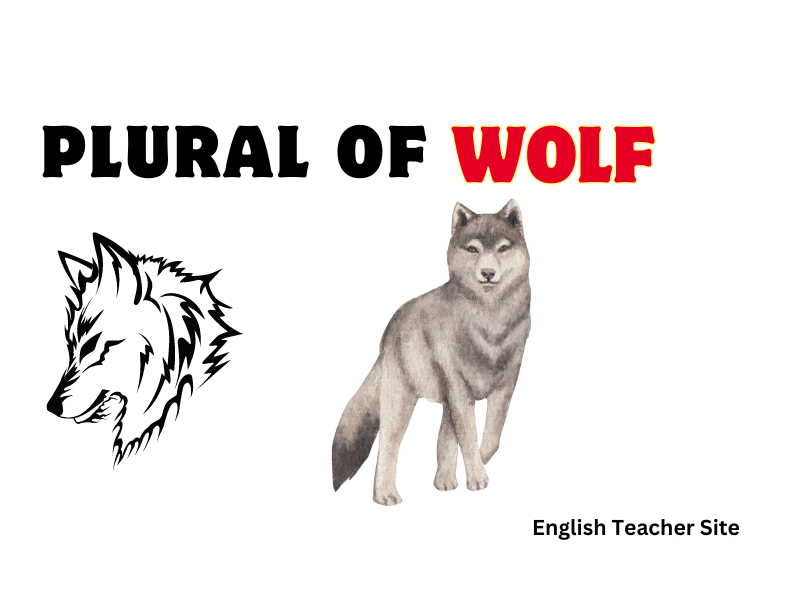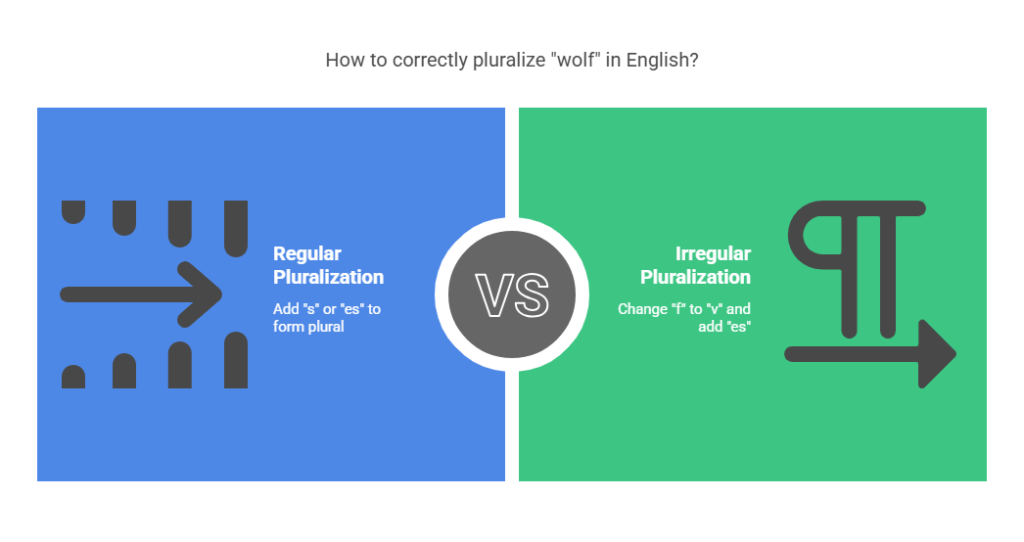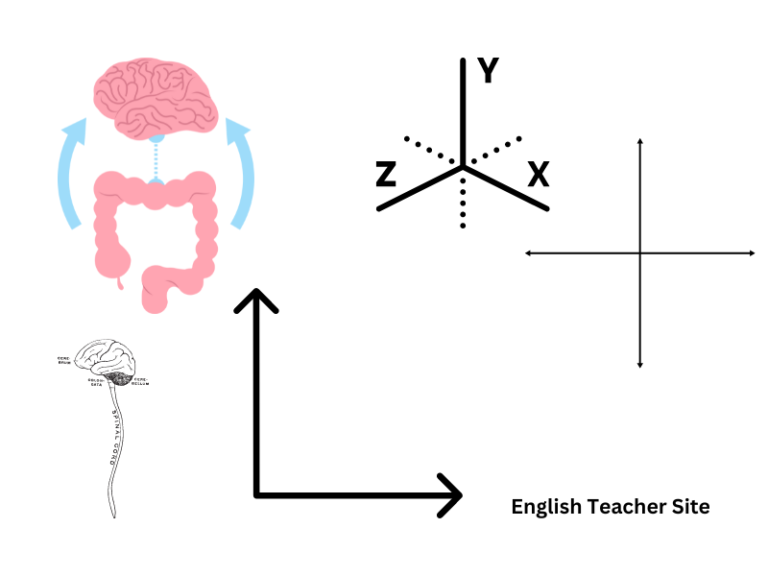The Plural of Wolf: Why It’s Not Wolves for Everyone

The plural of wolf is wolves, but it’s not as simple as just adding an “s.” In fact, English is full of rules and exceptions when it comes to pluralization. While the plural of wolf seems straightforward in some contexts, there are instances where it doesn’t always follow the predictable pattern. To truly understand why it’s not always wolves for everyone, one must first explore the complexities of English pluralization.
The Basics of Plural Formation in English
Irregular Plurals: When the Rules Don’t Apply
Irregular plurals, however, don’t follow these simple rules. Nouns like “child,” “tooth,” and “foot” change entirely when pluralized. The plural of “child” becomes “children,” while “tooth” becomes “teeth,” and “foot” becomes “feet.” These irregular forms don’t just involve adding an “s” or “es” but require a complete reworking of the word’s structure. This is where the plural of “wolf” fits in—while most people think “wolves” is the natural plural form, understanding why it’s not always so requires delving into the linguistic quirks of the language.
The Plural of Wolf: A Case Study in Irregular Plurals
Why Wolves is the Default Plural in Most Cases
In the case of “wolf,” the plural is “wolves,” which is formed by changing the internal vowel and adding “es.” This form is consistent with many other irregular nouns in English, where the plural form involves a vowel shift, rather than a simple “s” or “es” addition. The vowel shift in “wolf” to “wolves” mirrors patterns seen in words like “goose” to “geese” or “tooth” to “teeth.”
Unveiling the Exceptions: Why It’s Not Always Wolves for Everyone
Though “wolves” is the default plural for most speakers, there are rare instances where “wolf” is used in a non-standard way in certain dialects or historical texts. These exceptions arise from regional variations in language and pronunciation, but they are far from the norm. In most modern contexts, “wolves” remains the universally accepted plural form. However, the instances where exceptions appear highlight the fluid and evolving nature of language.

Exploring Other Irregular Plurals with Similar Patterns
Sheep, Deer, and Fish: The Animals That Break the Mold
English is rife with irregular plural forms, particularly among animals. Words like “sheep,” “deer,” and “fish” are famous for not changing in the plural form. No matter how many sheep, deer, or fish there are, the word remains the same. This kind of pluralization is an exception to the general pattern, and though it’s not as common, it shares similarities with “wolf” in that it involves no change in form for the plural.
Vowel Changes vs. Adding “-s”: A Deeper Dive into Irregular Plural Rules
Irregular plurals can be broken down into two primary categories: those that involve vowel shifts, like “wolf” to “wolves,” and those that completely alter the form of the word, such as “man” to “men.” Understanding the difference between vowel changes and complete reformation of the word helps clarify why some nouns are irregular in their plural forms while others are not.
When Does ‘Wolves’ Actually Apply?
The Correct Contexts for Using Wolves
“Wolves” is the proper plural form of “wolf” when referring to more than one of these animals. It’s used in both written and spoken English to describe groups of wolves, as in “a pack of wolves.” This plural form is appropriate in all contexts, including scientific, casual, and literary.
How Context Influences Plural Usage in Different Dialects
In some dialects of English, the plural of “wolf” may be used in a less standard form, though these instances are rare. In most regions, “wolves” is the universally accepted plural. Understanding how context affects pluralization can help in recognizing when certain variations appear, especially in colloquial or historical contexts.
Understanding the Subtle Nuances of Pluralization in Everyday English
Context matters when using irregular plurals. While “wolves” is the standard plural, understanding when deviations may occur—due to dialect or historical usage—helps improve your language proficiency and avoid confusion.
Practical Tips for Mastering Irregular Plurals
Creating Mental Shortcuts for Remembering Tricky Plurals
Memorizing irregular plurals can be challenging, but creating mental shortcuts, such as rhymes or associations, can help. Linking “wolf” to “wolves” through a memorable image or phrase makes it easier to recall the correct plural form.
Common Irregular Plural Patterns to Watch For
Some irregular plurals follow consistent patterns, such as vowel shifts (e.g., “tooth” to “teeth” or “goose” to “geese”). Recognizing these patterns can help streamline the process of learning and applying irregular plurals.
Exercises to Reinforce Correct Pluralization
To reinforce the correct usage of irregular plurals, try writing sentences with irregular nouns and practicing their plural forms. Exercises like this can make irregular pluralization second nature.
Conclusion: Mastering the Plural of Wolf and Beyond
Understanding irregular plurals, such as the plural of “wolf,” is crucial for mastering English. These forms tell a story of language evolution, providing depth to the way we speak and write today. Mastering these quirks not only improves language proficiency but also enriches communication, allowing you to navigate the intricacies of English with confidence. As you continue to explore the world of irregular plurals, remember that language, like everything else, is always evolving.
Sources
My name is Khamis Maiouf. I am the creator of the English Teacher Site, dedicated to providing valuable resources and insights for students around the world. With a passion for education and a commitment to helping students enhance their skills, I aim to make English teaching more effective and enjoyable for both educators and students.






